Key Takeaways:
- 82% of organizations let workers use their own devices for work.
- With automated location tracking, companies reduce asset theft and misplacement.
- Mobile asset tracking helps improve the maintenance process and reduce downtime.
Tired of your team wasting time searching for key assets, tracking down data, and dealing with inefficient workflows?
Well, those days are finally coming to an end, thanks to mobile asset tracking.
Through complete, real-time visibility, mobile asset tracking keeps your business agile, your decisions data-driven, and your operations running smoothly.
Keep reading to discover how exactly mobile asset tracking can revolutionize the way you work, and learn about the best trackers you can use with your smartphone.
In this article...
Top Benefits of Mobile Asset Tracking
Let’s cut to the chase and discuss all the helpful benefits of smartphone-based asset tracking.
No Need for Additional Hardware
One of the most obvious benefits of using smartphones for asset tracking is that you don’t need specialized hardware like handheld scanners or RFID readers.
This is a significant perk for several reasons.
For one, it’s far more cost-effective.
Smartphones have lower upfront costs in general, but you could even cut this expense completely with a Bring Your Own Device (BYOD) policy, letting workers use their own phones.
In fact, according to the 2021 Cybersecurity Insiders survey, 82% of organizations already support this.
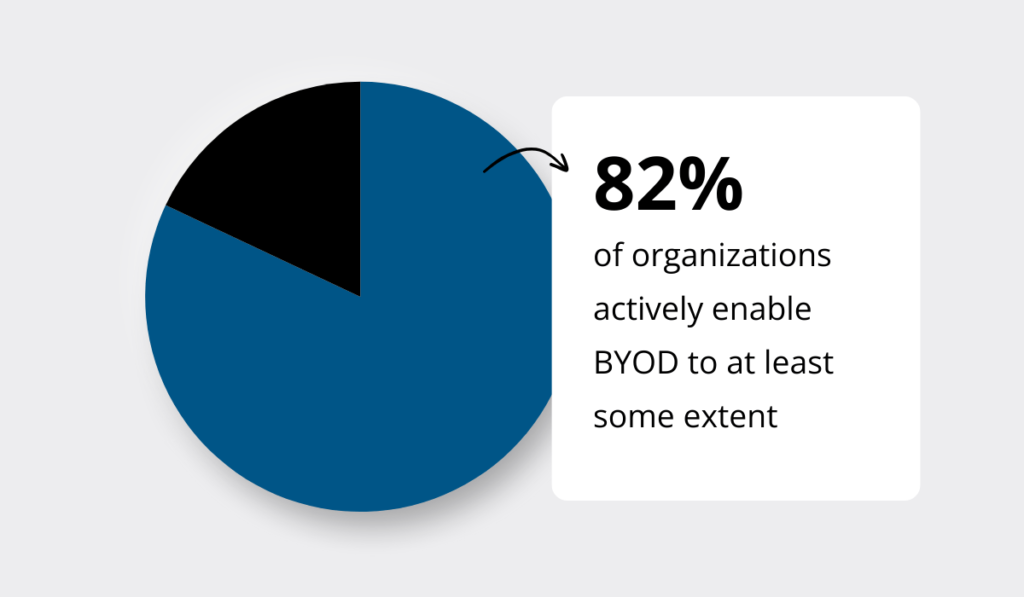
So, it’s obvious that this concept is widely recognized as a smart and efficient way to handle work-related tasks across many industries.
Asset tracking is certainly no exception.
But that’s not all.
Phones are also much more convenient.
As this online review points out, there’s no need to keep track of extra devices, maintain them, carry them around, or worry about losing them.
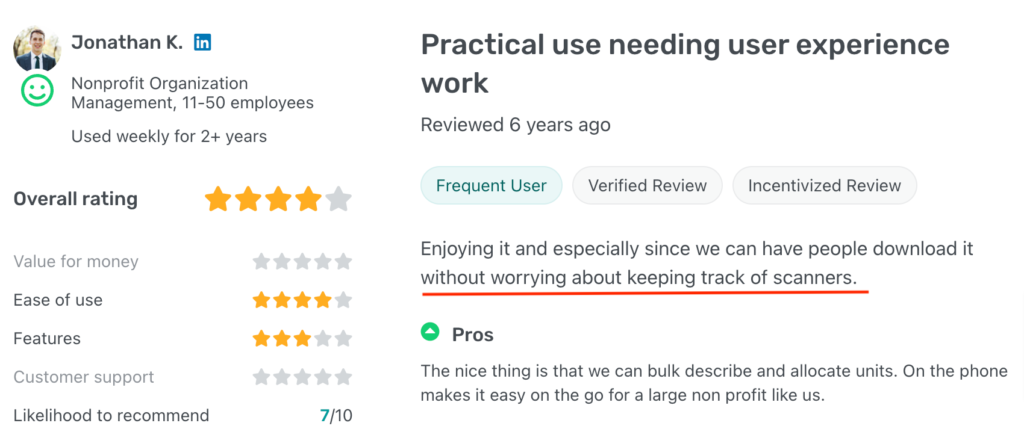
Smartphones just fit into everyday workflows.
Lastly, tracking is more flexible and versatile when you use smartphones.
Smartphone apps usually include advanced features like reporting, analytics, and streamlined equipment check-in/check-out, making asset monitoring even more accurate and efficient.
No handheld scanner can compete with that.
In short, eliminating additional hardware simplifies asset tracking while making it more effective and flexible.
Below, you’ll find a quick comparison of smartphones vs. scanners that proves exactly why mobile phones are the future of asset tracking.
| Smartphones | Scanners | |
| Cost | Generally lower, as smartphones are widely available and multifunctional | Higher, as dedicated devices require separate purchase, maintenance, and upgrades |
| Convenience | More convenient since most people already carry smartphones | Requires carrying an additional device |
| Maintenance | Easy to update software via app stores and generally low maintenance | May require vendor-specific updates and specialized servicing |
| Integration | Easily integrates with asset tracking software, offering access to additional features | Limited compatibility and features |
But the best part?
The advantages of smartphone-based asset tracking don’t end here.
User-Friendliness
The biggest perk of mobile asset tracking is that it requires minimal training.
Let’s face it: smartphones are a huge part of our daily lives. Most people use them constantly, making this piece of technology their second nature.
Did you know that, according to SensorTower research, 14 billion hours per day were collectively spent on Android phones in 2023 alone?
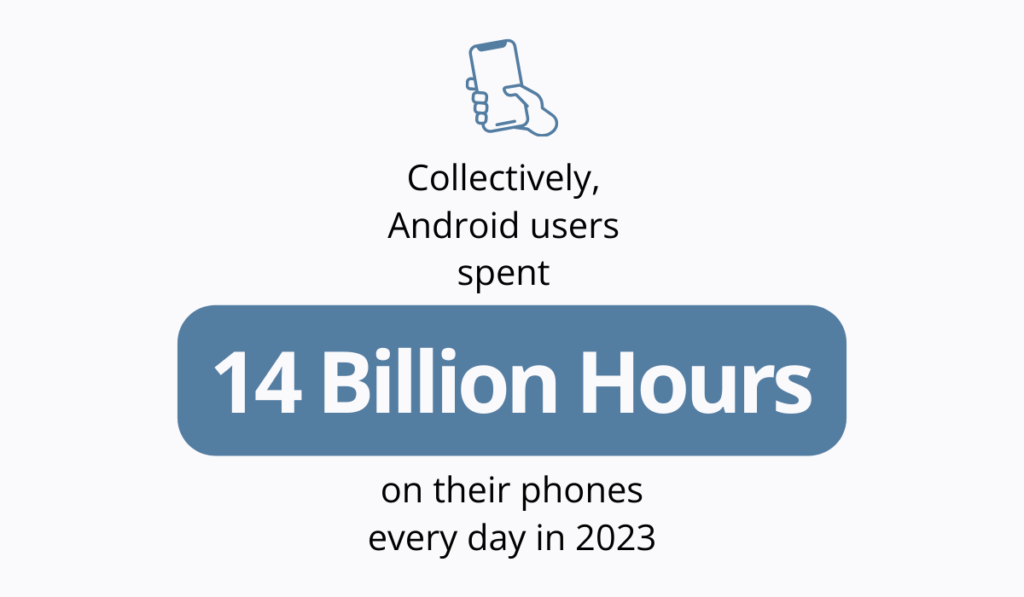
In other words, it’s safe to assume that nearly everyone is somewhat of a smartphone expert nowadays.
But smartphones aren’t only for personal use.
They’re also widely used for work across various industries.
Take construction, for example—an industry known for avoiding new technologies and sticking to traditional methods.
According to the 2024 Deloitte survey, 33% of construction companies are already using apps, with another 39% planning to adopt mobile technology soon.
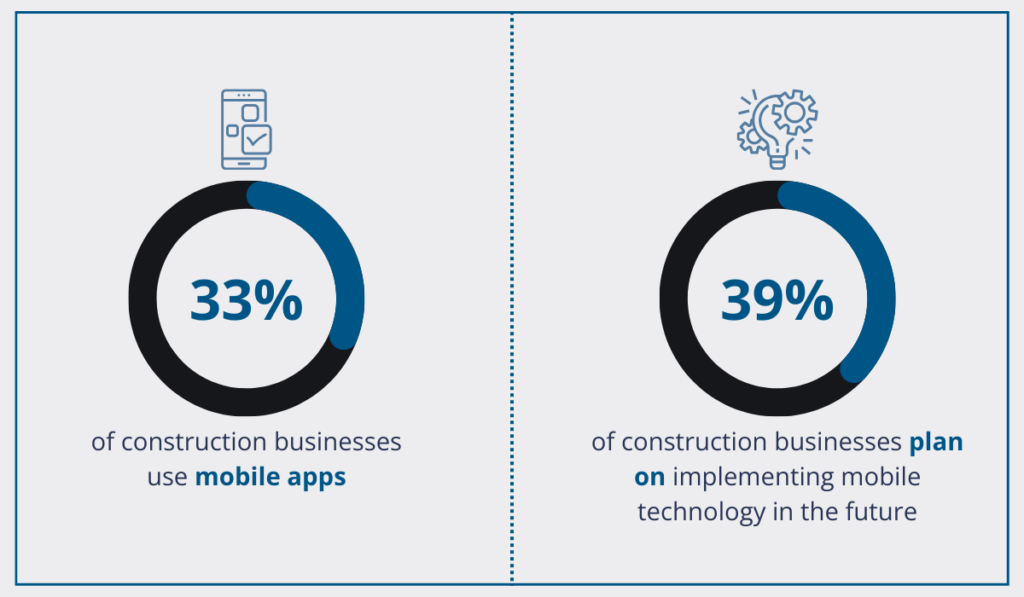
This is, at least partly, because mobile technology is so user-friendly, even for less tech-savvy workers.
But why does this ease of use even matter?
When your employees already know how to use smartphones, rolling out mobile-based systems is quick and easy.
No long, frustrating training sessions. No resistance. Just faster adoption, faster results, and faster ROI.
The 2023 Userlane survey confirms this, revealing that resistance to change is one of the top three barriers to tech adoption in the UK.
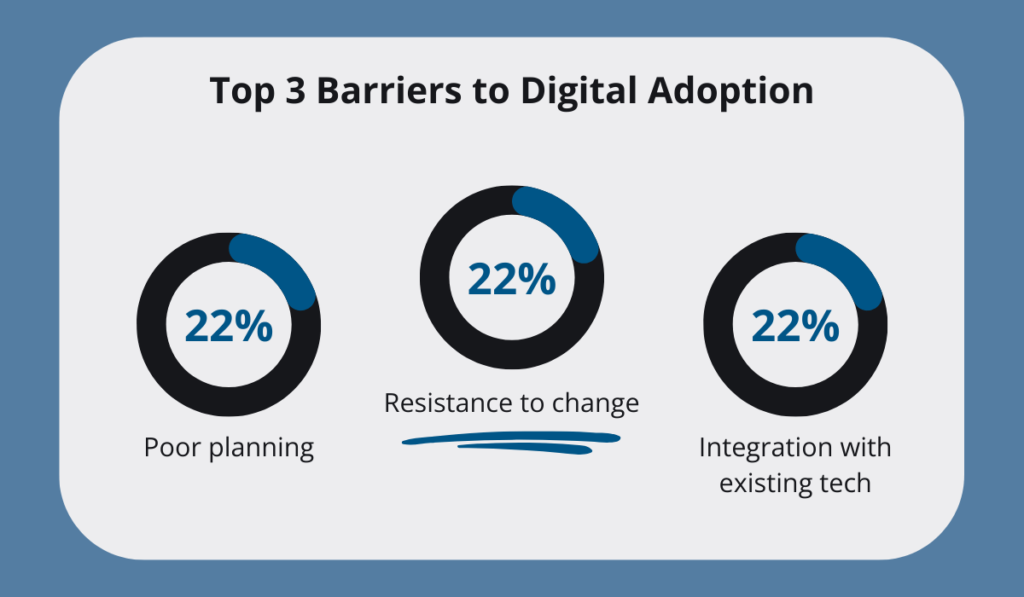
But with smartphone-based asset tracking, there isn’t much change to resist.
It’s all so familiar, convenient, and intuitive.
Mobile asset tracking checks all the boxes when it comes to quick and easy implementation.
Instant Access to Asset Data
With a smartphone app, workers can access vital information on the go.
Whether it’s asset location, current users, maintenance history, warranty details, or anything else, you can see it all anytime, anywhere, as long as you have internet access.
Here’s what that might look like:
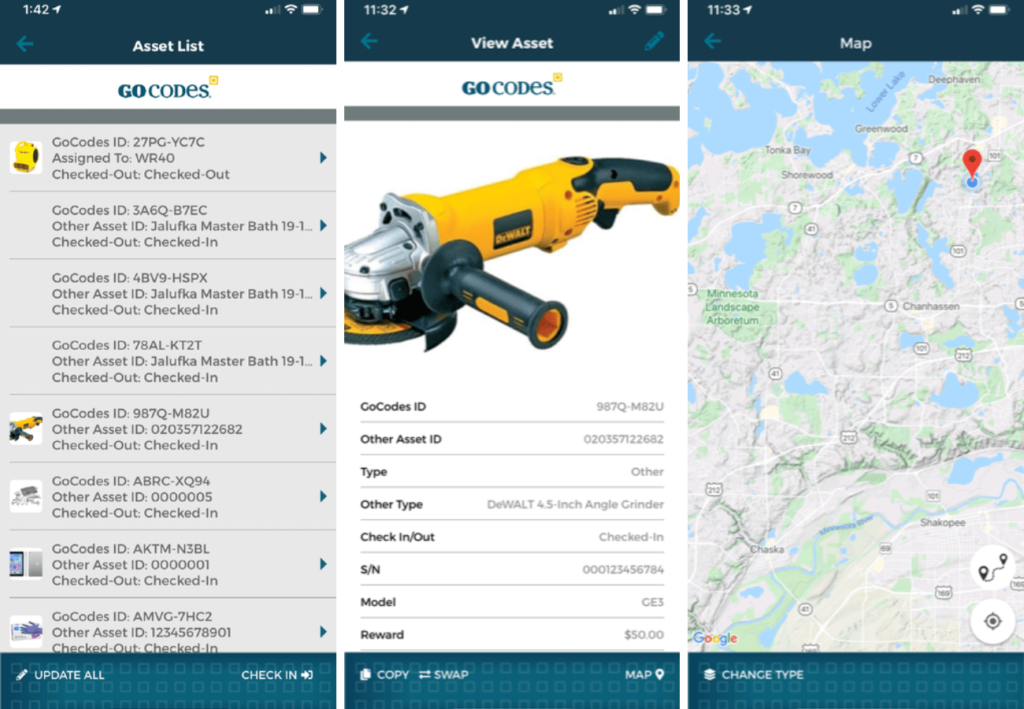
Additionally, smartphone apps typically send customizable, real-time notifications for scheduled upkeep, low inventory levels, unauthorized usage, and more.
This takes instant access to data to another level.
You don’t even have to worry about checking your asset records—the system does it for you, keeping you in the know and in control at all times, wherever you are.
For example, below is an alert for a piece of overdue equipment.

With notifications like this at your fingertips, you can easily ensure every asset is right where it needs to be and when it needs to be, preventing costly delays and disruptions.
Overall, with instant access to information, you save time and stay informed, no matter what.
As Melissa Schulteis, Virtual Construction Lead at Miron Construction, explains, this enables you to make more timely decisions:

After all, the ability to make quick yet well-informed decisions is a must for any fast-paced job.
And let’s be honest, every job is fast-paced nowadays.
With mobile asset tracking, there’s no need to run back to the office, search through files, or make endless phone calls just to get a simple update.
Everything you need is right there—so you can get the job done faster, smarter, and with total confidence.
Automated Location Tracking
Mobile tracking provides real-time or near real-time GPS location data for your valuable assets, which allows you to quickly check their whereabouts on a digital map, like the one shown below:

Today, location data is the backbone of successful asset monitoring and management, helping businesses allocate resources more strategically as well as prevent misplacement and theft.
Just ask J&M Keystone, Inc., a San Diego-based restoration contractor.
Before adopting GoCodes’ mobile asset tracking system, they were losing thousands of dollars due to misplaced equipment.
Lee Sherman, their former Operations Manager, recalls the struggle:
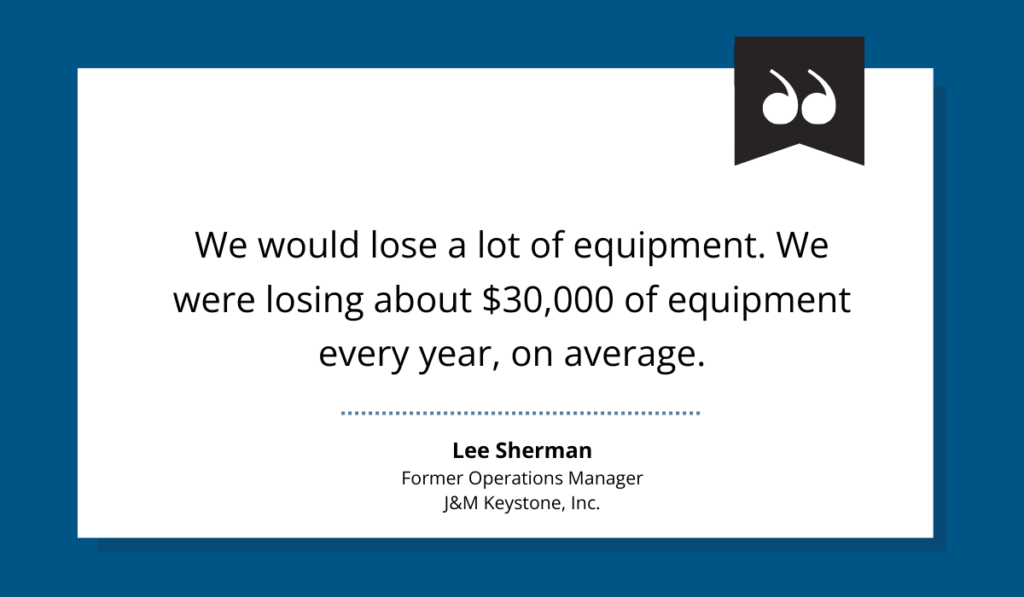
Without an effective monitoring system in place, workers would accidentally leave behind tools and completely forget about them, leading to costly replacements.
That changed once J&M Keystone adopted mobile asset tracking.
They affixed GoCodes’ QR code labels (shown below) to their tools and installed the scanner app on the phones, and the improvement was instantaneous.

Each time a worker needed to use a tool, they’d scan the label and the GPS location of the update would be automatically recorded.
So, if something went missing, all they had to do was check the system and look up where it was last used.
According to Sherman, this led to significant cost savings:
“Through that, we’ve got our equipment loss down, probably closer to $1,500 per year.”
The same principle applies to theft prevention.
If a piece of equipment is stolen, you can share its last known location with law enforcement, increasing the chances of recovery.
The bottom line is this: without automated location tracking, effectively managing assets is nearly impossible.
But with smartphones and their built-in GPS capabilities, you can eliminate inefficiencies, protect assets, and reduce costs—all in one step.
Remote Fault Reporting
Did you know that mobile asset tracking can also improve your maintenance efforts?
With a smartphone, field workers can easily report faults or issues with assets on the go.
So, instead of tedious paperwork, they simply have to enter key details in the app, like their name, location, and a brief description of the problem.
Instantly, the right person receives all the necessary information and can respond directly through the app, as illustrated below.
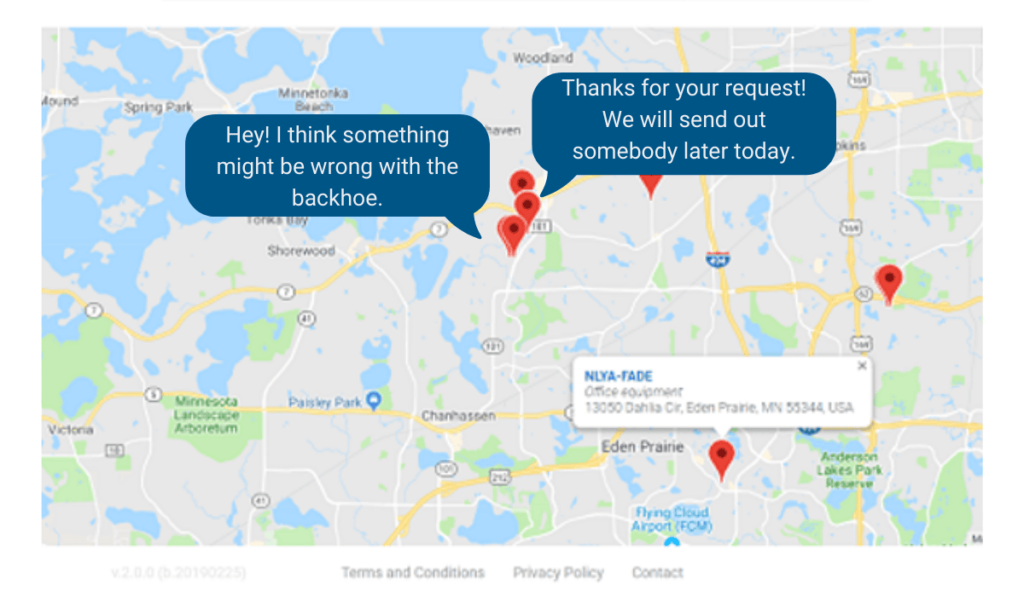
This is incredibly useful as it eliminates lengthy reporting processes, allowing technicians to perform inspections and repairs faster and more efficiently.
As a result, you resolve minor issues before they escalate, ultimately reducing unscheduled downtime.
In fact, according to the 2024 MaintainX survey, 65% of maintenance professionals agree that proactive upkeep is the most effective way to reduce unplanned downtime incidents.
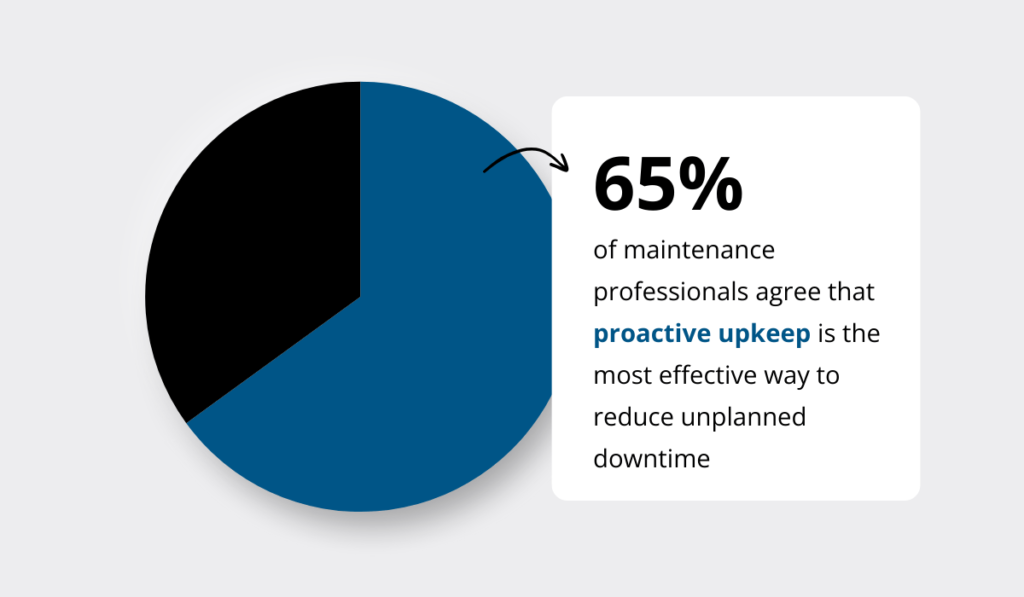
Remote fault reports make being proactive easier than ever, keeping everyone in the loop and ensuring quick issue resolution.
E.K. Services Inc., a full-service utility, excavating, and paving construction contractor, has seen firsthand how game-changing this feature is.
Their CIO, Shawn Beinhower, elaborates:
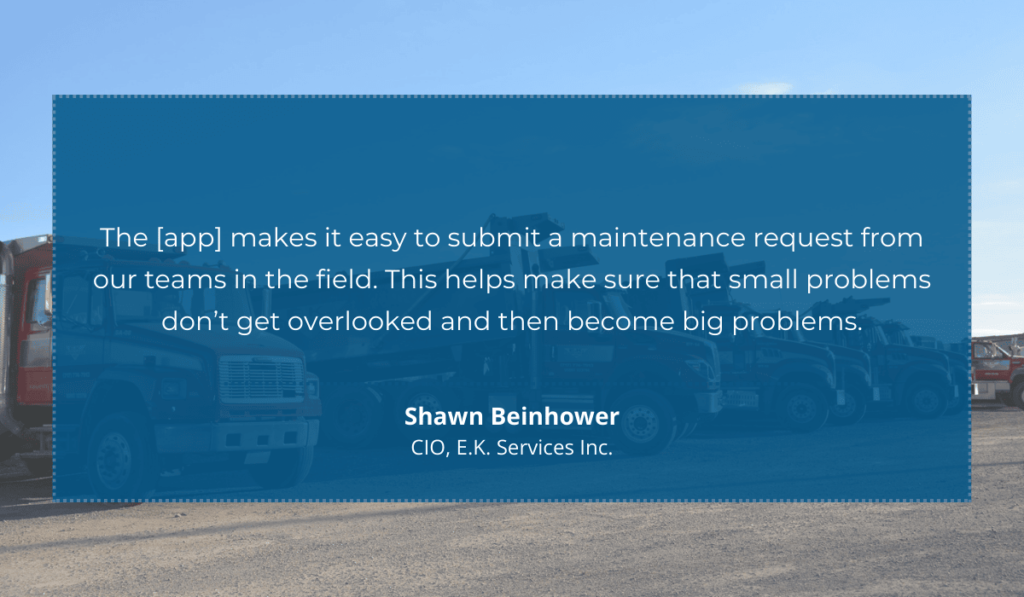
Before this system, they’d occasionally miss maintenance, especially during the busy season.
By the time issues were identified, it was already too late, with upkeep costs skyrocketing and operations facing major disruptions.
However, with remote fault reporting, that never happens anymore, says Beinhower.
Trackers That Work with Your Smartphone
If you want your mobile tracking system to work effectively, you’ll need to pair the software with some kind of tracking device.
There are plenty of options to choose from, each with its own advantages, disadvantages, and ideal use cases.
Let’s quickly go over them so you can make an informed decision for your own business.
One of the most popular choices is QR codes.
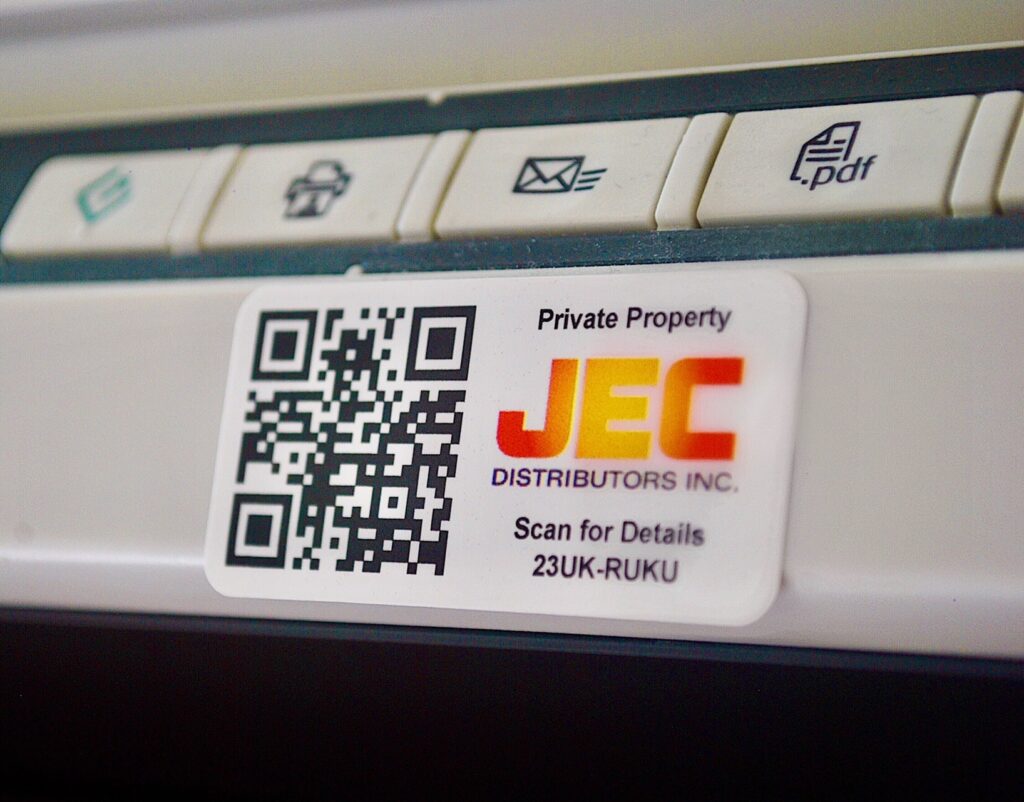
Think of QR code asset labels as gateways to asset data.
When scanned with a smartphone app, they allow users to view and update asset information, as well as check items in or out.
They are widely used because they are quite cost-effective, easy to implement, and simple to use.
Just keep in mind that, if your assets are exposed to harsh environments, you’ll need durable tags to prevent damage and ensure readability.
A more advanced alternative to QR codes is NFC (Near-Field Communication) tech.

NFC tags function similarly to QR codes, but instead of scanning, a smartphone taps the tag to retrieve or update asset information.
NFC is user-friendly and offers better data security through encryption support but it’s also more expensive than QR codes.
This makes it better suited for situations where high security is the number one priority.
Another option is RFID (Radio Frequency Identification).

Unlike QR and NFC, RFID doesn’t require a direct line of sight and allows you to scan multiple tags simultaneously.
However, RFID systems come with higher costs than the previous two technologies.
Therefore, consider using it for tracking high-value assets, especially those that move frequently, rather than smaller, cheaper tools and materials.
BLE (Bluetooth Low Energy) beacons also work with smartphones.

After they are placed on assets, nearby BLE-enabled devices (smartphones, tablets, or dedicated sensors) detect and log their signals.
A central system then calculates the asset’s location based on signal strength.
As such, BLE-based systems completely automate asset tracking, eliminating manual scanning.
At the same time, they work both indoors and outdoors, unlike the next piece of tech we’re going to cover.
That said, these trackers do have limited accuracy—typically within 1–5 meters, depending on setup.
Finally, GPS trackers also provide real-time tracking without the need for manual scanning.
In addition to location data, they can monitor other types of information such as speeding, braking, engine hours, and more.

However, they come with higher costs than the other tracker types and don’t work that well indoors compared to BLE.
That’s why GPS is far better suited for tracking fleets and other outdoor equipment.
Now, for a quick overview and comparison of all these trackers, check the table below:
| Pros | Cons | Ideal Use Case | |
| QR codes | Low cost and easy to implement | Can get damaged in harsh environments | Materials, tools, and equipment of all sizes |
| NFC | Secure communication and user-friendly | More expensive than QR codes and shorter range than RFID | In cases where high data security is the top priority |
| RFID | Automated scanning with no line-of-sight required, can scan multiple tags at once | Higher cost and signal interference issues (metal & liquids affect readability) | High-value assets that move a lot |
| BLE | Low power consumption and works indoors | Limited accuracy (~1-5m depending on setup) | Indoor asset tracking (warehouses, hospitals, airports) |
| GPS | Real-time location tracking, supports geofencing and usage/condition monitoring | High cost and doesn’t work well indoors | Fleet, vehicle, and outdoor equipment tracking |
As you can see, there’s a solution for every type of business.
No matter what your budget, workflows, goals, or needs are, you’re bound to find the perfect tracker for your valuable assets.
Conclusion
If you’re still on the fence about mobile asset tracking, ask yourself these questions:
Do I need to make informed, timely decisions?
Do I want to protect my assets from misplacement and theft?
Do I want to get the best ROI from my equipment?
If you answered yes—and we assume you did—then you certainly stand to benefit from mobile asset tracking.
It’s finally time to say goodbye to guesswork, delays, and inefficiencies.
With your smartphone, you can take control of your valuable equipment and tools like never before.





